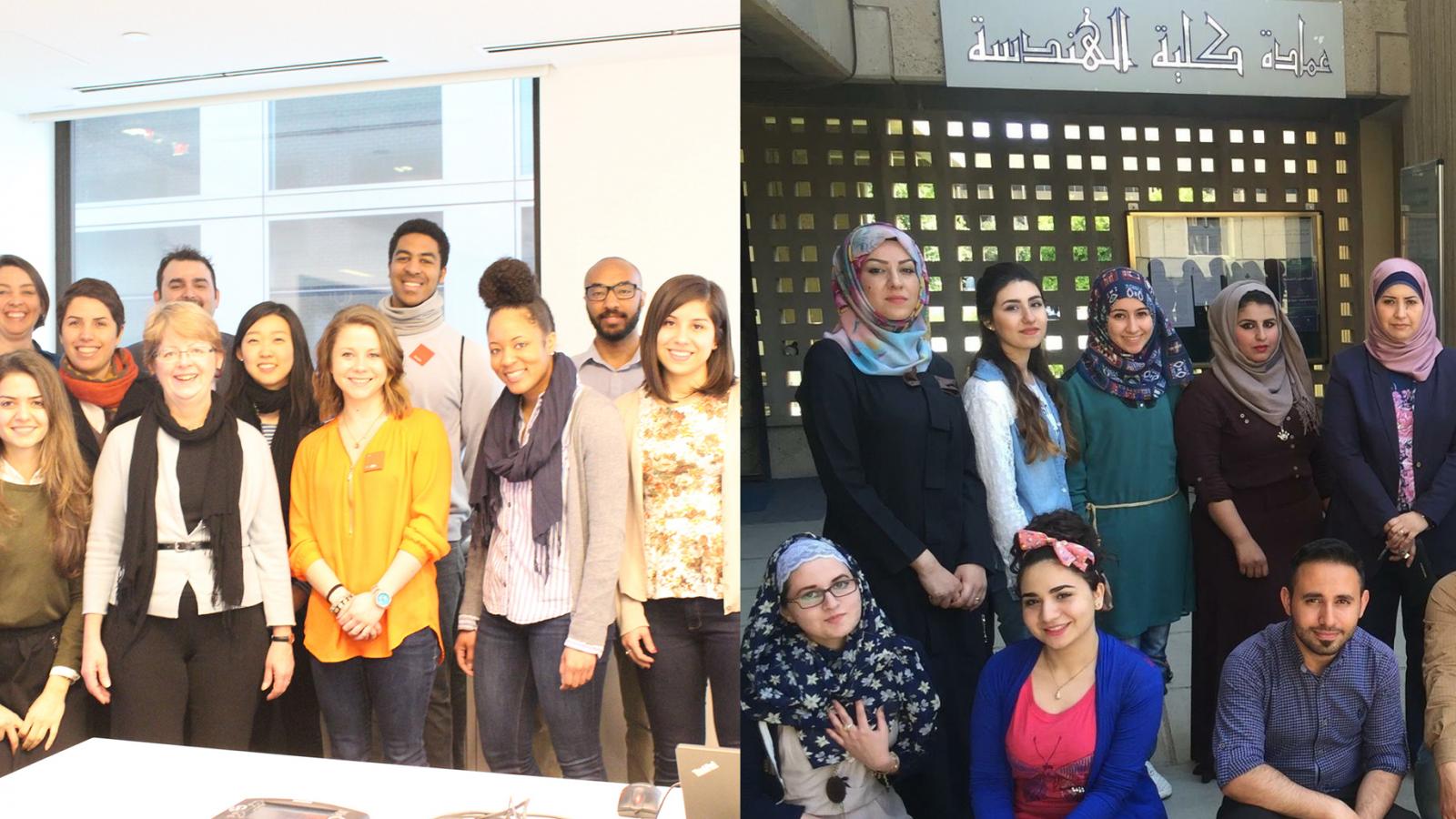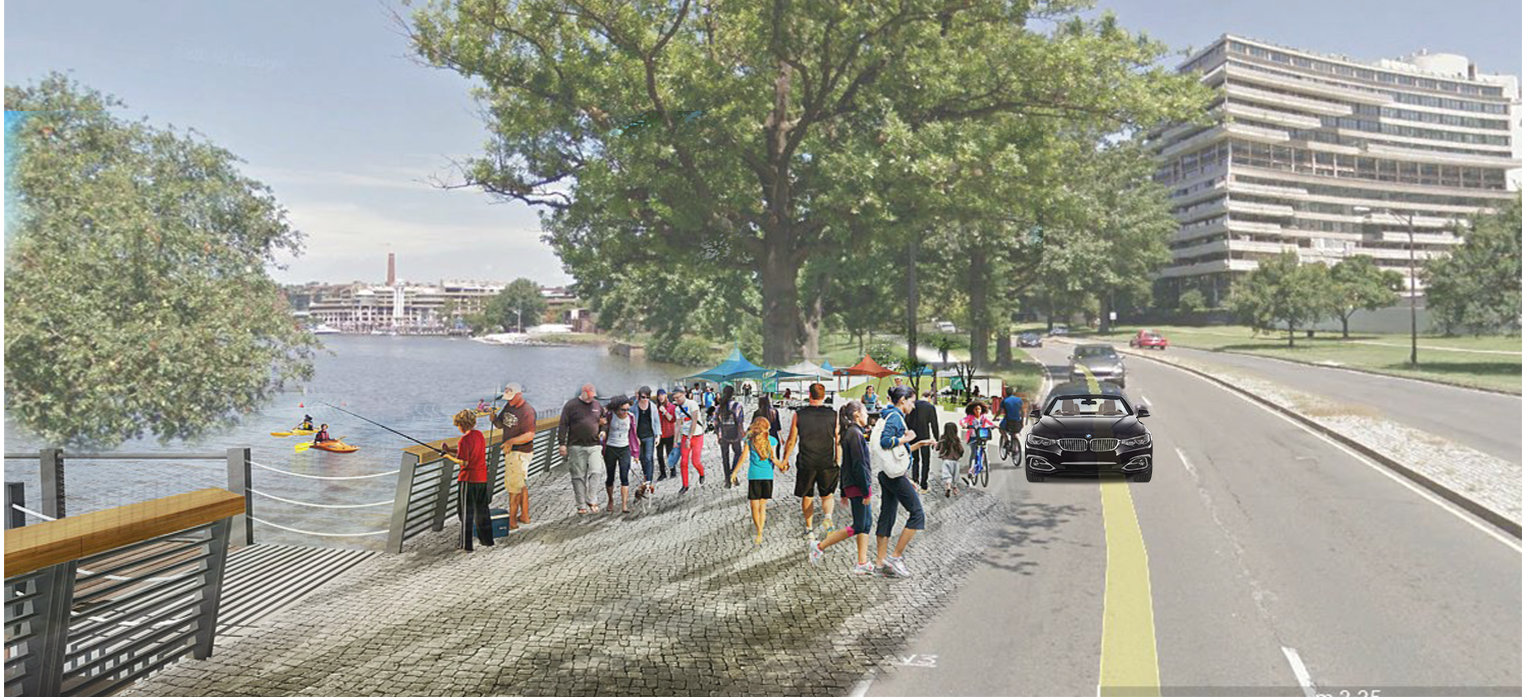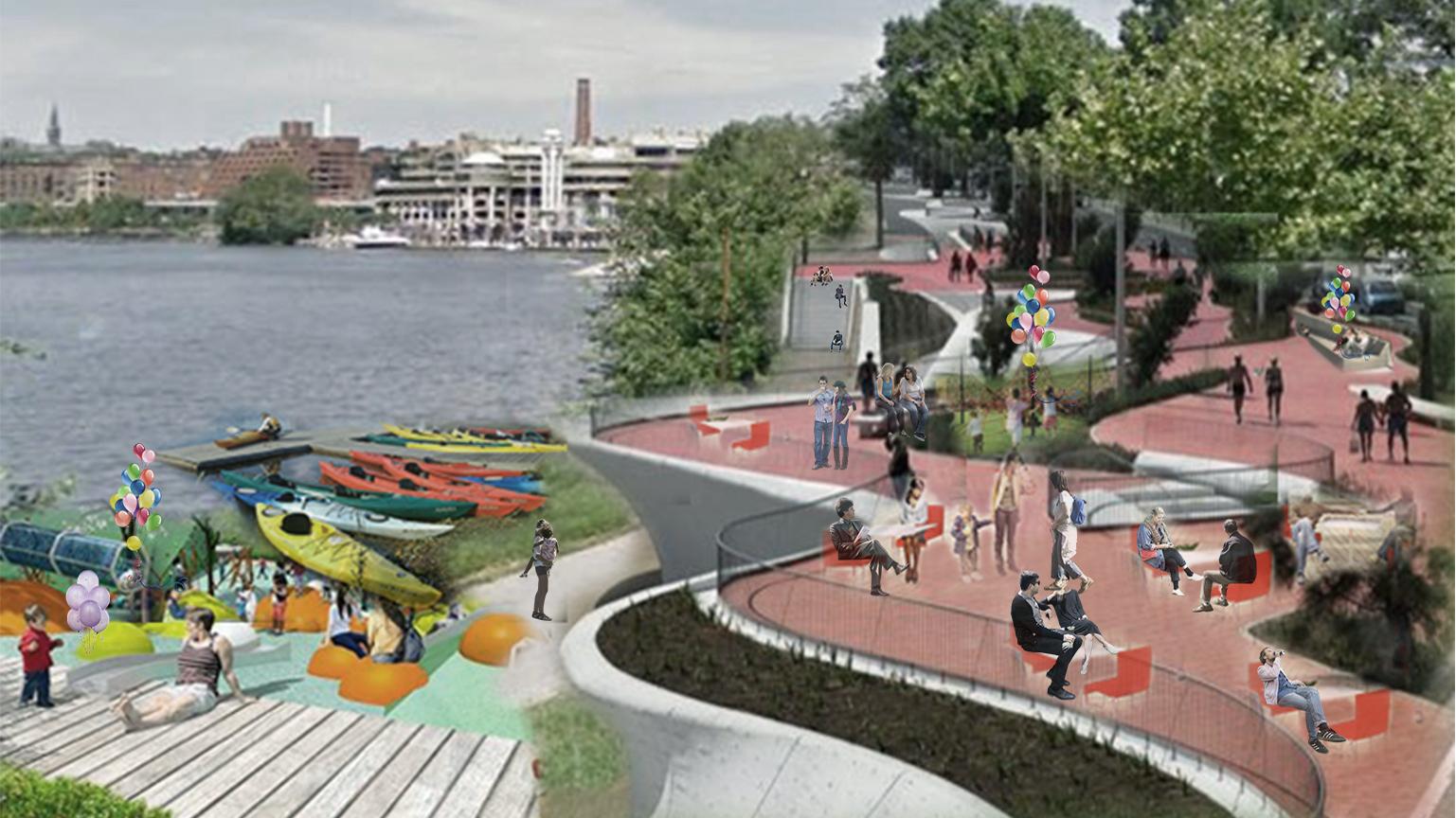Winning designs seek to heal the wounds of war
Architecture graduate students Paula Coronado and Jennifer Chorosevic have earned top honors in Gensler D.C.’s “Bridging the Gap” (BTG) design competition. The competition was the result of a cross continental studio this past spring that challenged two groups of students—eight graduate architecture students from the University of Maryland and 12 architecture students from Al-Nahrain University in Iraq—to address specific cultural and environmental challenges through design, in a place the students had never seen. Coronado and Chorosevic’s winning concepts re-imagined a better future for a Bagdad neighborhood that capitalizes on culture and re-connects the people with their environment. They join two of their peers from Al-Nahrain University, Shams Qais and Dalia Raad, in this honor, which will include an internship spot at Gensler’s Washington, D.C., office.
The studio project, sponsored by Gensler D.C., centered on bridging the distance and cultural gaps that exist across two continents, by exploring the commonalities, differences and challenges of each culture. Relying on the help and perspectives of their cross-cultural peers, Al-Nahrain University students tackled a design challenge in the Foggy Bottom neighborhood of Washington, D.C., while UMD students took on a site in Baghdad. BTG was co-led by UMD Professor Madlen Simon, Al-Nahrain Professor Shaimaa Hameed Hussein, Gensler architects Zahraa Alwash, Ahmed Khalil and JJ Rivers (UMD alum, M.ARCH and MRED ’14) and Dewberry Architects Associate Principal Marlene Shade. The undertaking was part of a Gensler Innovation Fund, designed to fuel innovative and interesting projects, was spearheaded by Gensler Principal and Managing Director Jordan Goldstein, AIA (ARCH alum, B.S. Architecture ’94).
Over the course of the semester, UMD students were tasked with developing an overall master plan for the neighborhood surrounding Tahrir Square in Bagdad, with students completing individual projects in the area, including adaptive reuse of a bus depot, riverfront and a vacant, subterranean shopping center. The primary design objective stemmed from a common desire communicated by their Iraqi counterparts: to reimagine a better future for a neighborhood significantly scarred by war and terrorism.
Achieving this goal was not without its challenges; not only could the students not access the site, they were stymied by a lack of tools that are commonplace in U.S. architecture practice, such as GIS information, street views from Google Earth and government websites. Instead, the students relied almost entirely on the cultural connection with their peers to gain a better understanding of daily life in Bagdad. This was accomplished with the help of Facebook, Slack and regular videoconference calls, all prolifically used in the Middle East.
“The most meaningful part of working with my peers cross continentally was being educated in a new culture as well as sharing our culture with them,” said Shams Qais. “That experience reduced the distance between us—bridged that gap—in turn allowing us to find new strategies in the design we had not used before.”
Capitalizing on social media, students were able to exchange information and pictures while gaining a better understanding of their sites’ challenges, the cultural and safety implications as well as opportunities. UMD students, in particular, needed to envision how their design could foster a more prosperous, peaceful future for Iraq.
“When I first began this studio I was intrigued by the idea of tactical urbanism, especially in a country that so desperately needs it,” said Paula Coronado, who repurposed abandoned blast walls in her design to create a flotilla workshop on the riverfront, reviving an important part of Iraq’s culture. “My goal throughout the semester was to impact the users with the architecture I was designing. Our team strived to create a brighter future for Baghdad, a city deeply affected by war.”
“This was an ideal exercise for us to stress the importance of design thinking and user experience,” said Madlen Simon, who led the U.S. contingent of the project. “What do people need? How do you convey a design that is culturally relevant, sustainable and improves the quality of life for people and communities? This is a critical part of the design process.”
While the project revealed just how much the two groups have in common, it also taught important lessons in cultural differences and sensitivity. In particular, the need to design for separate recreational swimming areas for men and women along the riverfront was surprising—and even uncomfortable—to many of the UMD students.
“The pluralistic nature of Iraq provided a very important lesson in practice for our students, namely, the importance of providing options,” said Simon. “Our students will have circumstances where they will be designing for people with very different beliefs than their own. You cannot push your own beliefs on your clients or tell them what to do; you have to give them options.”
The four winners were selected for their proficiency in researching and identifying the relevant challenges of the sites, addressing these challenges and enhancing the user experience. All of the designs will be on view at the District Architecture Center beginning August 2, 2016.
“What I love about working with students from other countries is seeing the world through a different pair of eyes,” said Jennifer Chorosevic, whose riverfront design aimed to reconnect people to the Tigris River. “This is not just limited to design. You get to see how other students think, what other students are passionate about and how others envision a brighter future through architecture.”



